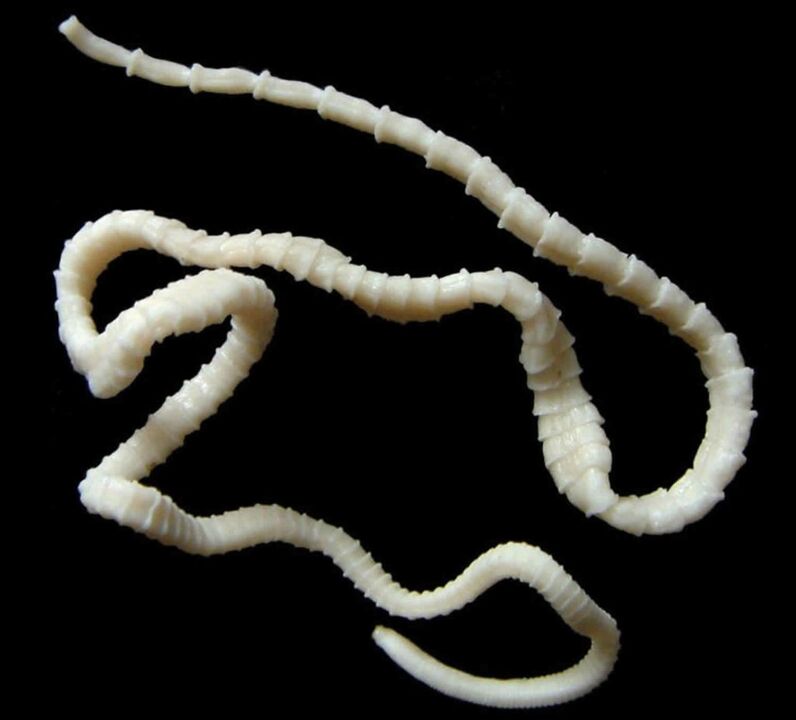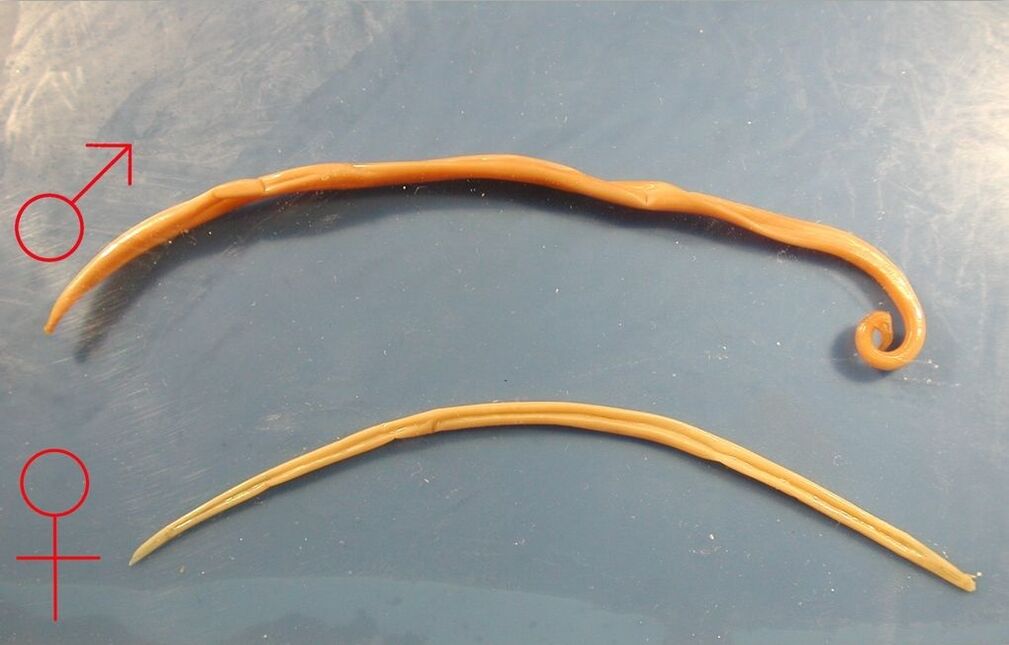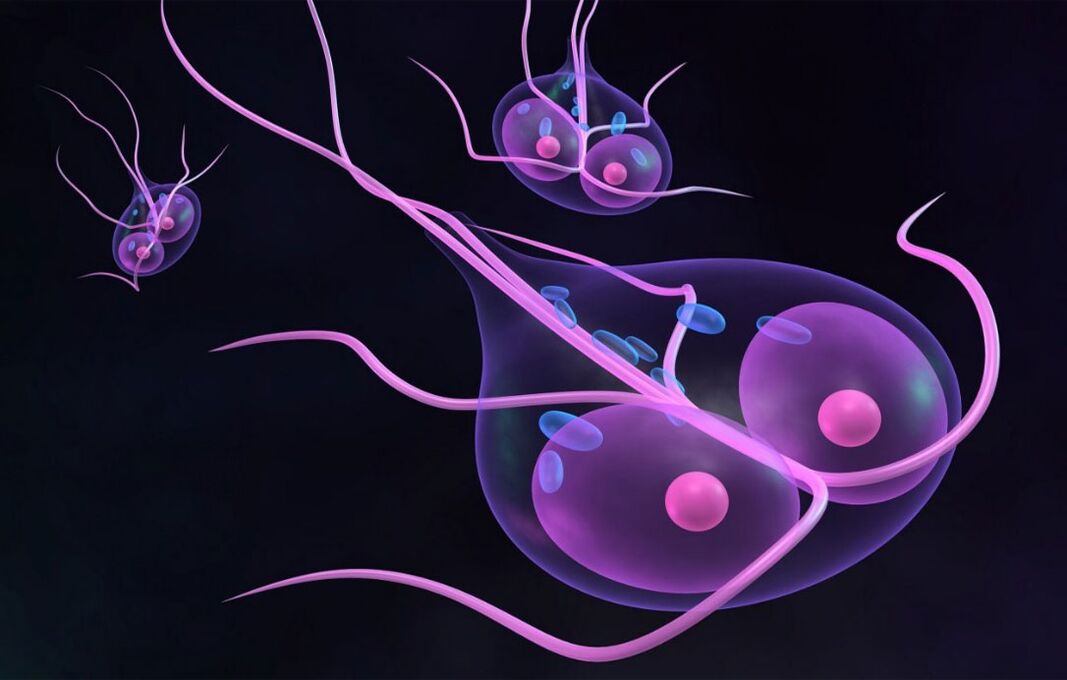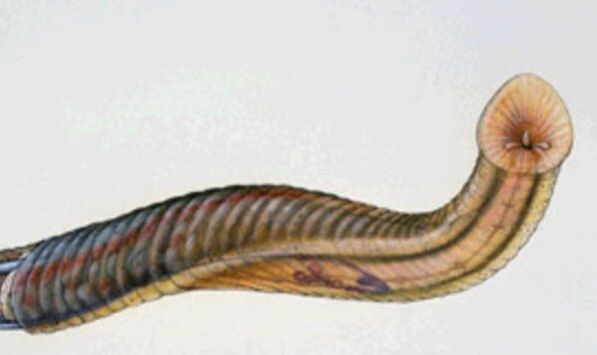Intestines or other worms in humans are invasions that affect the whole body. The disease is caused by infection by the eggs and larvae of worms and is characterized by a number of specific symptoms.
Diagnosis is made with several tests, both stool and blood. Worms in the stomach and other organs occur in adults and children, may appear in the anus, in feces, or not manifest themselves in any way.
cause
Worms in the intestine are transmitted mainly through the fecal-oral route, that is, for infection, it is necessary to swallow parasite eggs or worm larvae. An unpleasant feature of this invasion is that some types of helminths in children and adults remain viable for a long time outside the host body (e. g. , in water, in soil).
Parasite eggs laid by adults there remain susceptible to infection for several months. This feature leads to the fact that some types of worms in children and adults are very widespread.
The main routes of infection are as follows:
- Infection is through the use of untreated water, which can be in wells, natural reservoirs, and even flowing from pipes. Almost all intestinal parasites in humans survive and breed in water for a long time, so it is better to drink bottled water. In areas unsuitable for sanitary conditions, water in wells may be used only after prolonged boiling;
- The appearance of worms on the baby's back can occur as a result of eating vegetables that are not washed properly. If manure is used to fertilize the soil, which is infected with worms, then their larvae, eggs and adults emerge and survive long in the soil. Along with the soil particles, the eggs fall on the vegetables. If such vegetables are badly washed, then they will enter the body of the host, causing helminthic invasion in a person;
- Flatulence and other characteristic symptoms of an attack can occur after eating contaminated meat, fish, or poultry. If an animal, bird or fish suffers a helminthic attack during life, then most likely its flesh is also infected, while parasites (e. g. , fish) easily take root in the human body. You can get rid of it only as a result of careful and prolonged heat treatment of meat (boiling or frying at maximum temperature). You can also defeat the invasion by freezing. But since most modern household freezers are capable of providing a maximum temperature of about 8 degrees, it is necessary to keep meat, fish or poultry there for at least a week;
- Signs of worm infection in humans may appear after contact with pets. Dogs and cats that walk on the street almost always have worms in their stomachs (domestic cats, usually, are not infected). When performing a hygiene procedure, the animal spreads worm eggs from the anus to the rest of the coat. If you kiss such an animal or do not wash your hands after contact with it, you can get worms in the human body, because the invasion of animals takes root and reproduces in the human body;
- One can see bloating and other signs of the presence of helminths even after swimming in an infected pool. This is a relatively rare method, but infection is possible;
- Transmission of helminthiasis in humans from one individual to another occurs through surfaces, towels, linens. Eggs and larvae move to the surface or tissue of the skin of an infected person, and from there migrate to the skin of a healthy person when touched. After that, there is a possibility of bringing them into the oral cavity of healthy people and the development of infection.
Keep in mind that many types of intestinal parasites are common in groups of children. This is because many children do not care too much about cleanliness and many surfaces in kindergarten are covered with helminth eggs, whose picture is presented below, even though only one child is initially ill.
For this reason, the main task of the parents is to explain to the baby that all types of worms in humans are dangerous and can survive on the skin of the hands and get into the mouth from it. For this reason, good hygiene is important. Videos about the spread of worms in women, men and children and the peculiarities of their development are posted at the end of the material.
Variety
Some patients are interested in the color of the worms and how to visually determine what is in the stool? Often these are white or mild worms, although sometimes transparent worms are also found in humans. They are flat or round, sometimes they have two dark food channels on the sides.
- The largest human worms are called tapeworms. The largest in this group are bovine tapeworms. According to scientific research, they can live in the gut for up to 40 years and reach several meters in length.
- Ringworm is the most common type of pest, belonging to the ringworm nematodes. Can such an individual be very large? Females reach a length of about 25 cm, males - 12 cm;
- Pinworms are more common in children than adults. These are small individuals, similar in description to ringworms, but smaller. The largest pinworm worms barely reach 10-12 cm;
- Giardia is the smallest type of parasite. It's quite common. If it is found in the feces, you need to figure out what to do with the worms and start choosing treatment;
- The invasion of trichinosis is characterized by the most severe course, fever and facial edema present. Such invasion is called that caused by the nematode Trichinella.





The most common types of individuals have similar characteristics and can be seen in feces. Therefore, the feces of a person who has worms can be distinguished from the feces of a person who is not infected.
Localization
Some people who suspect they have an invasion are interested in where in the human body the worm is localized? Although it is traditionally believed that worms occur in the human body in the gut, this is not entirely true.
Almost all types of helminths in humans can develop in many organs and systems, which is associated with the peculiarity of their migration, when the larvae hatching from eggs in the intestine enter the bloodstream and spread with it throughout the body.
They enter the human body through the mouth, but their manifestation can occur in the following places:
- Subcutaneous parasites are not a very common type of tropical parasite carried by insects (tsetse flies, certain tropical mites, etc. ). Parasites under the skin are almost never found in the middle aisle, but there is a risk of infection with them during the visit. Such parasites are localized under the skin only in the early stages of their life cycle, after which they can move to the muscles;
- The common place where localization is observed in women is the vagina, uterus. They can crawl there from the anus or infect the reproductive system at the migration stage;
- Worms in the ears of infants or adults are also found because the larvae often infect ENT organs (including the throat);
- Many worms choose the digestive and intestinal systems as their localization sites. There they have enough nutrients (blood and serum) and oxygen to maintain a normal life. Treating intestinal parasites is usually easier than others. But even if at first they are in a person’s stomach, then over time they can infect other organs;
- Signs of worms in the lungs can be confused with the characteristic symptoms of pleurisy or pneumonia. However, this is a common place of worm localization, so it is important to diagnose its presence in a timely manner;
- If the parasite is coiled in the brain, then the nervous system is damaged. It can manifest itself as seizures, irritability, unreasonable anxiety, etc . ;
- If worms in people manifest themselves in the liver, then tachycardia, rhythm disturbances and more are possible. In severe cases, heart failure develops;
- In the liver, helminths are also common, because there they get mainly from the intestine through the portal vein.
As can be seen from above, patients wondering where worms live in humans should take into account not only the type of invasion, but also the stage of infection.
Complications
It is important to know what leads to worms, and what will happen if you do not treat them? Worms cause general intoxication of the body, which can be very noticeable.
Allergy symptoms also appear, as the immune system produces histamine to defend itself against foreign invasion. In this case, you need to remember how an allergic rash looks with helminths-these are medium-sized pink spots, sometimes itchy, hives, usually, are not present.
Such as hepatic localization, and when located in other organs, tapeworms in humans or other parasites, causing damage to the mucous membranes and local inflammatory processes of small areas.
As a result, abscesses may occur (in the case of the liver, with the penetration of pus into the abdominal cavity and blood poisoning if left untreated).
Like damage to the bronchi and lungs, cough often appears. Then bronchitis, pleurisy or pneumonia develop, which must be treated with antibiotics, despite the fact that this is a response to aggression.
With the localization of parasites in the vagina, exacerbation of chronic diseases and disruption of the microflora may appear. It is believed that such a phenomenon can cause infertility.
symptoms
The symptoms of worms in humans vary, but they are characteristic of almost all types of parasites. However, chronic and acute infections can have different symptoms in adults. In acute infections, the symptoms of the following disease are characteristic:
- High temperatures in general normal conditions (up to 38 degrees);
- Chills and skin symptoms (rash) similar to fever;
- When the larvae are localized in the lungs or bronchi, the symptoms in the body are expressed by coughing;
- The inflammatory process is a sign of the presence of worms in the human body, therefore, an increase in lymph nodes occurs;
- Worms and allergies in individuals are linked, therefore, signs of the appearance of worms in a person in the form of rashes and allergic reactions are possible.
But often the symptom of the presence of worms in humans is the intestine, because there the parasite is most often localized. These are the symptoms of a worm infection in an individual, such as:
- Stool disorders-constipation or diarrhea, sometimes bleeding;
- The first symptoms of worms are loss of appetite, nausea, aversion to certain types of food, which eventually leads to weight loss;
- The first signs of worms in adults can also be bloating and bloating;
- Over time, pain in the abdomen and stomach develops, not dependent on food intake, intermittent or continuous;
- With worms, a person experiences symptoms of general intoxication - paleness, drowsiness, chronic fatigue, etc.
Skin parasites cause specific symptoms in adults and children. Signs of worms are numbness in the legs, tingling in the skin, headache, dizziness, more rarely - fever. In any case, the incubation period of worms in humans is quite long and can take from a few weeks to several months.
For this reason, the first signs of worms in a person may not appear soon. And because almost all symptoms in a person the presence of worms may indicate another disease, often if a person has worms, this becomes apparent only when they enter the feces.
Diagnostics
Despite knowing how the worm appears, you may not notice its appearance. Some types of worms do not appear for a long time, and the diagnosis of worms in humans cannot be carried out at home. In the laboratory, the following methods are used to help determine if there are worms, their symptoms and treatment are discussed in this article:
- General blood analysis. Worms can occur if there are irregularities in them. It looks like severe anemia - a significant decrease in iron and hemoglobin levels. It occurs due to the fact that worms in humans cause local bleeding, constantly damage the mucous membranes, and they are also parasites that feed directly on the blood;
- If the worms are in the intestines, then their waste products will be in the feces. What are the signs of worms in an individual that can be seen in feces? These are eggs, larvae, or even adult parasites. Although, if you know the appearance of worms in humans, adults in feces can be identified independently;
- No matter where the worms come from in humans and the type of worms in humans (protozoa, roundworms, tapeworms) there appear to be antibodies to them in the blood. This is due to the fact that once a person has a worm, the immune system perceives it as a foreign invasion and tries to defend it by producing antibodies. This method helps to determine the type of worms present, and what symptoms should be expected, as different antibodies are produced for each invasion.
The latter method of diagnosis is excellent because it allows you to learn about worms at an early stage, identify the types of worms and know how to treat worms in humans.
Treatment
Some patients who are interested in the appearance of human worms and how they get into the body also want to know how to cure them in a person. The official drug treatment regimen for worms in adults involves a single dose of an anthelmintic drug that acts on the whole body when a person has worms.
It is also desirable to repeat the course of treatment in adults 2 - 3 weeks after the drug is used for the first time. It is necessary to poison small and large attacks twice to completely get rid of the larvae.
Other treatments are recommended if the worms are present in children. Because the drugs are toxic, treatment in adults has a negative effect on the liver. For children, medications are prescribed that can be taken in short courses (several times), which reduces the burden on the liver.
Some of those who wonder how to treat worms in individuals choose the method of folk struggle, when the worms in adults or children are eliminated in a natural way.
It is believed that a mixture of ground pumpkin seeds with honey in a one -to -one ratio is effective against worms, if eaten daily in one tablespoon.
Effective treatment is carried out using an enema of garlic-milk solution. You can also treat worms in the gut by drinking a similar solution. With the presence of worms in a person, the symptoms will start to show themselves weaker after a week.
Prophylaxis
Knowing where the worms come from, where the cream worms come from, you can determine a list of rules that must be followed to protect yourself from worms in humans. In order not to ask the question "do I have worms", it is advisable to do the following:
- Wash vegetables and fruits thoroughly;
- Boil or fry the meat thoroughly, you can also freeze it for a long time;
- Use only bottled water or purified water for drinking;
- Limit contact with pets and take regular precautions against helminthic attacks;
- Wash your hands often, especially after being in public.
If an infection is suspected, it is recommended to regularly check the stool for the presence of helminths.



























